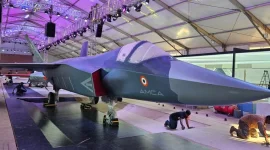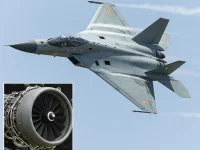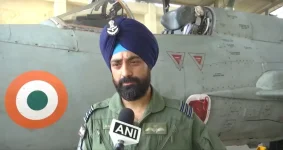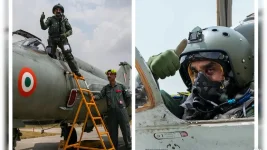The Indian Air Force (IAF) is marking the end of an era as it prepares to phase out its fleet of iconic MiG-21 fighter jets, with the indigenously developed Light Combat Aircraft (LCA) Tejas poised to take its place as a cornerstone of the nation's air defence.
This strategic shift was highlighted by a symbolic final sortie on a MiG-21 Bison by Vice Chief of the Air Staff, Air Marshal AP Singh, signalling a confident transition towards self-reliance in military aviation.
The LCA Tejas was conceived specifically to succeed the MiG-21, a Soviet-era aircraft that has been a workhorse for the IAF since its induction in 1963.
While the MiG-21 was renowned for its speed and agility in its prime, serving valiantly in conflicts such as the 1971 Indo-Pak War, its ageing airframes and a high rate of accidents have necessitated its retirement, which is scheduled for completion by 2027.
The Tejas has been engineered to fill this operational gap, inheriting the MiG-21's compact design for agility while incorporating vastly superior modern technology.
Developed jointly by the Aeronautical Development Agency (ADA) and Hindustan Aeronautics Limited (HAL), the Tejas represents a significant leap in India's aerospace capabilities.
While inspired by the lightweight frame of the MiG-21 and the aerodynamic delta-wing design of the French Mirage 2000, the Tejas is a 4.5-generation fighter.
It features advanced systems such as a fly-by-wire flight control system, a modern glass cockpit, and an airframe constructed from sophisticated composite materials.
These features not only enhance its manoeuvrability but also reduce its visibility to enemy radar, making it a formidable platform for modern aerial combat.
During his address, Air Marshal Singh emphasised the continuous evolution of the Tejas platform, particularly through the integration of new, domestically developed weapons.
The aircraft is already capable of deploying a variety of munitions, but work is underway to equip it with next-generation systems like the Astra Mk-2 beyond-visual-range air-to-air missile and the BrahMos-NG supersonic cruise missile. These upgrades are intended to maximise its combat effectiveness and ensure it can counter a wide array of future threats.
With an excellent operational record of over 10,000 accident-free flying hours, the Tejas has proven its reliability and is set to become the backbone of the IAF for point defence and rapid response missions.
Beyond its primary role as a fighter, the Tejas is also being developed as a versatile training aircraft.
The twin-seater variant is positioned to serve as an advanced jet trainer, preparing the next generation of IAF pilots for complex frontline aircraft like the Rafale and Su-30 MKI.
This offers a cost-effective and indigenous solution to pilot training, reducing India's dependence on foreign platforms and aligning with the national objective of self-sufficiency.
The successful induction of the Tejas is a testament to the growing strength of India's domestic defence industry under the 'Aatmanirbhar Bharat' (Self-Reliant India) initiative.
The IAF has already inducted two squadrons of the Tejas Mk-1 and has placed a significant order for 83 advanced Tejas Mk-1A variants. Plans are also progressing for an even more capable Mk-2 version.
This large-scale production is boosting the national economy, fostering technological innovation, and firmly establishing India as a rising power in global defence manufacturing.




